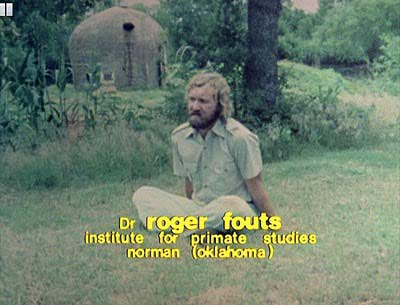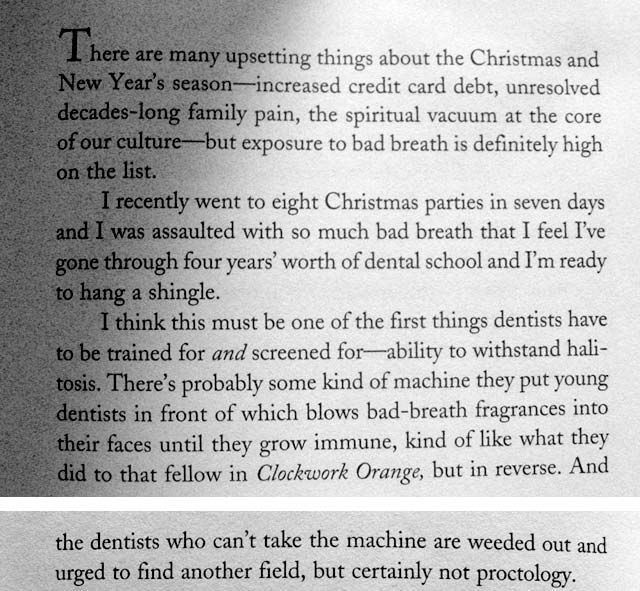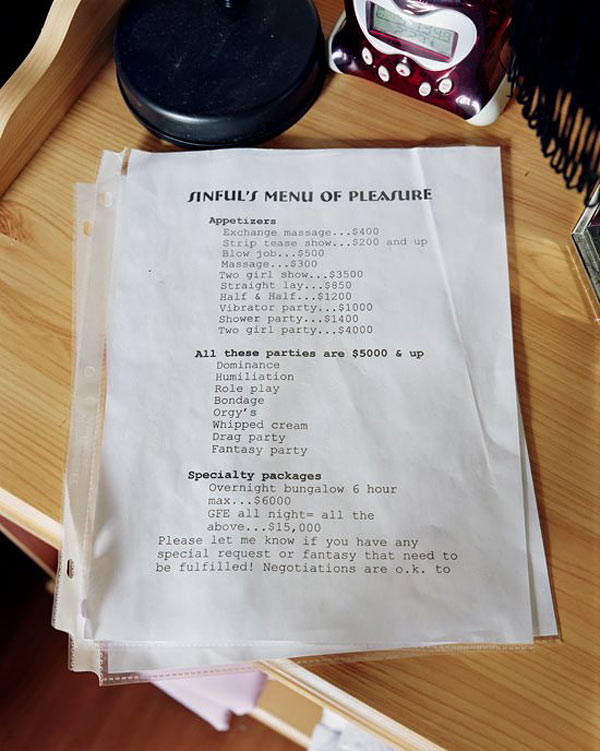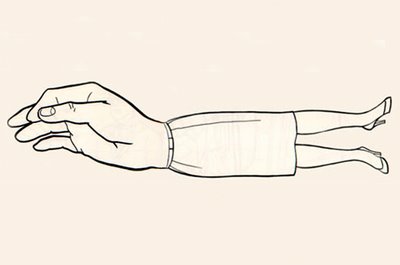We move like cagey tigers, we couldn’t get closer than this
{ Demographic studies have indicated that in humans, fertility and intelligence tend to be negatively correlated, that is to say, the more intelligent, as measured by IQ, exhibit a lower total fertility rate than the less intelligent. | Wikipedia }
Every day, the same, again
 North Face sues a company called South Butt for trademark infringement.
North Face sues a company called South Butt for trademark infringement.
Britney denies eating squirrels.
Man’s penis removed from pipe.
The G-spot ‘doesn’t appear to exist’, say researchers.
14-month old Chinese boy who survived brain surgery to remove a chopstick that accidentally ended up in his brain after entering through the nose. More: There is a surprisingly large medical literature on stray chopsticks that have become lodged in the brain.
4-ton statue stolen from Harley-Davidson store in Utah.
CEO of technology company Philips, talks to SPIEGEL about the radical restructuring of the traditional firm, market opportunities arising from aging populations and why the firm decided to start making sex toys.
CD sales continue free fall in 2009.
It’s actually been a decade of less and less war. Wars: A Decade Of Trends And The Unexpected.
Why we act without thinking. Three classic experiments show how stereotypes can influence our behaviour without our knowledge.
How Sigmund Freud, his nephew and a box of cigars forever changed American marketing.
Could mobile phone radiation protect against Alzheimer’s disease?
Can an extreme response to fear give us strength we would not have under normal circumstances?
What do young children know about managing fear?
What keeps time moving forward? Blame it on the Big Bang. Q&A with physicist Sean Carroll. Related: A few words about Sean Carroll’s new book, From Eternity to Here.
But are they real? The answer depends on how literally you define “vampire.”
Is there an easier way to detect lies than what you see on TV?
New-found galaxies may be farthest back in time and space yet. [Read more]
‘Most beautiful’ math structure appears in lab for first time.
Pi calculated to ‘record number’ of digits. A computer scientist claims to have computed the mathematical constant pi to nearly 2.7 trillion digits, some 123 billion more than the previous record.
Symmetry found hidden in supercold atoms.
10 technologies that will rock 2010.
Nobody has a million Twitter followers.
 The odds a daily smoker 18 or older has tried to quit smoking in the past year are 1 in 2.49—meaning for every smoker who lights up at least once a day, 2 out of 5 have tried to cut it out.
The odds a daily smoker 18 or older has tried to quit smoking in the past year are 1 in 2.49—meaning for every smoker who lights up at least once a day, 2 out of 5 have tried to cut it out.
The cheapest starred restaurant in the Michelin Guide is Tim Ho Wan (Hong Kong), a Cantonese eatery that for instance features for just HK$12 (US$1.53).
Woman sues lower East Side restaurant after moosehead falls off wall and knocks her on head. Update: Witness claims patron knocked head off White Slab Palace wall.
Coat maker transforms Obama photo into ad. More: The White House expects to contact the company to ask it to take the billboard down.
I think we can all agree that the icebergs are melting.
Gawker Media moves from pageviews to uniques: Be “even more of a hustler,” says Nick Denton.
Ten alternative to slouchy Uggs.
Your girlfriend is testing you: Naturally she is pleased to have a young, intelligent boyfriend, but she is worried that you only love her for her cash…
Michael Malloy was a homeless Irishman who lived in New York City during the early twentieth century. Although he was a former firefighter, he is most famous having survived a number of attempts on his life by five acquaintances, who were attempting to commit insurance fraud.
Spectral evidence is a form of evidence based upon dreams and visions. It was admitted in court during the Salem witch trials.
Do fire departments actually rescue cats from trees?
The “DRIV-URSELF” baby seat. Related: Vroooom.
Taking 3 weeks off. Normal service will resume on Jan 8.
Have a great holiday and see you next decade!
Muriel, since you left town, the clubs closed down

A fundamental mistake we often make when judging other people is assuming that their behaviour mainly reflects their personality. Unfortunately this ignores another major influence on how people behave staring us right in the face: the situation.
Our personalities certainly have an influence on what situations we get into and how we deal with them, but situational factors — even relatively subtle ones — can completely obliterate the effects of personality. (…)
Often people’s behaviour, and our own, may say very little about our personalities and much more about the complexities of the situation in which we find ourselves.
photo { Richard Kern }
In the corner with XXX
The real reason, I believe, most wealth is acquired is to gain status. You want to spend money, not just to obtain the material objects, but to signal to everyone else that you have the power to obtain them.
The desire to own doesn’t come just from intrinsic wants, but from what our friends want, and what society tells us we “should” have.
People tend to ignore the status benefits of wealth. Most obviously because seeking status is a low-status behavior. Anyone seen grubbing for fame or new toys to impress their friends becomes less impressive.
As a result, I believe many people delude themselves that they want material possessions for intrinsic reasons. This is an unconscious effort to seek material wealth for purely status-related motives, and at the same time, not appear interested in grubbing for status.
In the rain, the offices, every day, the same, again
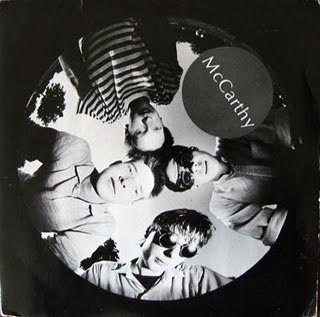
{ McCarthy, From The Damned, 1986 | Last FM | Listen }
‘Where there is much light there is also much shadow.’ –Goethe
Neuromarketers are becoming the next generation of Mad Men. They are working for companies like Google, Frito-Lay and Disney. But instead of directly asking consumers whether they like a product, neuromarketers are asking their brains.
Using electroencephalography (EEG)–a technology typically used by neurologists to diagnose seizures–marketers measure brain wave activity in response to advertisements and products. Electrodes placed on the subject’s scalp collect the data. The consumer herself doesn’t say a thing.
And that’s the point. In the new world of neuromarketing, it is the more immediate, unedited emotional brain-level reaction to a product or ad that presumably indicates what the consumer really wants, even if she doesn’t really know it. The rational and deliberate responses elicited in focus groups are considered unreliable.
No wonder EmSense, a San Francisco-based market research company, succeeded in raising $9 million in capital last month. (…)
Brain activation detected through the band’s sensors is believed to signal the consumer’s emotional engagement with a product. Engagement, in turn, is essential to sustaining interest and in enhancing memorability, important for developing brand loyalty. Yet the practical dimensions of neuromarketing are far from well-established.
First, how well does EEG detect emotion? It can gauge alertness, yes, but the more subtle kinds of mental states that relate to purchasing decisions–such as attraction, disgust, nostalgia or aspirational fantasy–are not accessible via brain wave analysis.
Second, the notion of a discrete “buy button in the brain,” as marketers call the holy grail of marketing, is deeply naive. Response to the shape, smell and color of a product is the culmination of complex processes that engage many areas of the brain.
previously { Now, get ready for Genomarketing! }
Smoke from the tires and the twisted machine

Advertising is destroying society, according to a new report from thinktank the New Economics Foundation.
The report, which compares the impact on society of groups of people doing six different jobs, concludes that advertising “can create insatiable aspirations, fuelling feelings of dissatisfaction, inadequacy and stress” among the population. It concludes that ad executives, which it says earn “between £50,000 and £12 million”, “destroy £11 of value for every pound of value they create” - almost exactly the reverse of a hospital cleaner.
photo { Maciek Kobielski }
Together we’ll ring in the new year
How to make the world’s easiest $1 billion
STEP 1: Form a bank.
STEP 2: Round up a bunch of unemployed friends to be “bankers.”
STEP 3: Raise $1 billion of equity. (This is the only tricky step. And it’s not that tricky. See below.*)
STEP 4: Borrow $9 billion from the Fed at an annual cost of 0.25%.
STEP 5: Buy $10 billion of 30-year Treasuries paying 4.45%
STEP 6: Sit back and watch the cash flow in.
Wrapping paper in the gutter, moving slowly as the wind on the sea

What does gift-wrapping do for the recipient? Is all this effort worth it for the recipient? For example, do recipients actually like gift-wrapped presents more than unwrapped gifts?
According to a study that was published 15 years ago by Daniel Howard, professor of marketing at Southern Methodist University in Dallas, it appears so.
box { House Industries }
‘It’s a skill, just like juggling.’ –George Costanza
Here’s a curious paradox related to American Sign Language, the system of hand-based gestures used by around 2 million deaf people in the US and elsewhere to communicate.
Almost 40 years ago, researchers discovered that although it takes longer to make signs than to say the equivalent words, on average sentences can be completed in about the same time. How can that be possible?
Today, Andrew Chong and buddies at Princeton University in New Jersey give us the answer. They say that the information content of the 45 handshapes that make up sign language is higher than the information content of phonemes, the building blocks of the spoken word. In other words, there is greater redundancy in spoken English than signed English.
In a way, that’s a trivial explanation, a mere restatement of the problem. What’s impressive about the Princeton contribution is the way they have arrived at this conclusion.
They say that dreams are growing wild just this side of Burma Shave
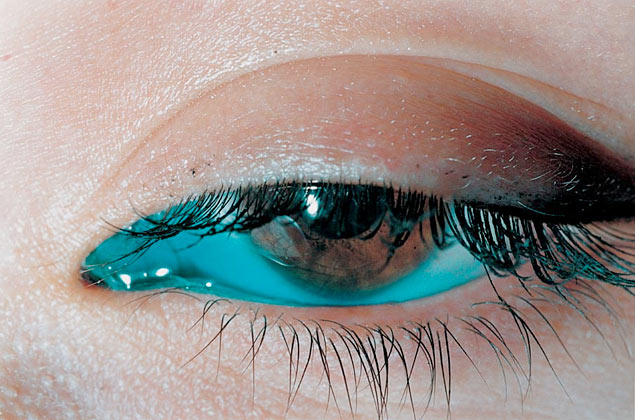
Bank robbers have threatened tellers with knives, shot their way into banks and tunnelled up into vaults. But one woman in southern Russia chose a more peaceful method: Police say Galina Korzhova hypnotised a bank teller into handing over tens of thousands of dollars in what is believed to be just one in a series of daring, if non-violent, bank robberies.
Galina Korzhova was arrested, said Anton Kornoukhov, a spokesman for police in the southern city of Volgograd, on suspicion of hypnotising a bank teller in the nearby town of Volzhky into giving her more than $80,000. She is suspected of having robbed up to 30 additional banks in what Russian media have called a “grand tour” around the country.
“She met the woman on the street, saying that she would remove curses and help cure sick relatives,” said Kornoukhov in a telephone interview.
Korzhova is accused of telling the bank employee, whose name has not been released, to put the money into a plastic bag and meet her outside the state bank Sberbank, on Communist Street in the small town. There, the case goes, the teller gave Korzhova the money.
{ The Global Post | Continue reading }
Police in Italy have issued footage of a man who is suspected of hypnotising supermarket checkout staff to hand over money from their cash registers.
I’m a trained hypnotist myself, so my first reaction was skepticism. You can’t hypnotize someone that quickly and reliably. But then I put on my criminal mastermind hat and tried to figure out how this crime could be committed as described.
The trick is to hypnotize the targets well ahead of the actual day of the robbery, perhaps several times, and weed out the people who don’t instantly return to the so-called trance state upon suggestion. Then on robbing day, a simple suggestion at the store or bank can produce the instant results you need. The subjects have been pre-trained.
The hard part of this scheme is finding a way to get the right people to agree to hypnosis ahead of time. I imagine he advertised in a local publication, offering to help people quit smoking or lose weight. When people called for an appointment he would ask what sounded like standard questions, including age and occupation. If someone had the right sort of job, he set up an appointment and started the process. On any given day, he could hypnotize several new clients while testing for the most susceptible subjects who also handle money.
The next part would be a bit tricky. You can’t get a hypnotized person to do something that would violate his basic sense of right and wrong, or to put himself in danger. The brain has some sort of safety mechanism to prevent that.
In the surveillance video on the web, the hypnotist is seen taking the money from the register himself while the clerk seemed to be watching. This might be part of his workaround. The clerk wasn’t committing the crime so much as observing it. And perhaps the hypnotist said he was borrowing the money, or the manager had asked him to bring it to him in the parking lot, or some other story that obscured the ethical boundaries.
It could work. He’d need to be an excellent hypnotist, but that isn’t so rare.
{ Scott Adams }
photo { Elinor Carucci }
The foulest stench is in the air, the funk of forty thousand years

Is Hell exothermic (gives off heat) or endothermic (absorbs heat)?
First, we must know how the mass of Hell is changing over time. So we need to know the rate at which souls are moving into Hell and the rate at which they are leaving. I think that we can safely assume that once a soul gets to Hell, it will not leave.
Therefore, no souls are leaving. As for how many souls are entering Hell, let’s look at the different religions that exist in the world today. Most of these religions state that if you are not a member of their religion, you will go to Hell. Since there is more than one of these religions and since people do not belong to more than one religion, we can make the assumption that all souls go to Hell. With birth and death rates as they are, we can expect the number of souls in Hell to increase exponentially.
Next, we look at the rate of change of the volume in Hell because Boyle’s Law states that in order for the temperature and pressure in Hell to stay the same, the volume of Hell has to expand proportionately as souls are added. This gives two possibilities:
(1) If Hell is expanding at a slower rate than the rate at which souls enter Hell, then the temperature and pressure in Hell will increase until all Hell breaks loose.
(2) If Hell is expanding at a rate faster than the increase of souls in Hell, then the temperature and pressure will drop until Hell freezes over. So which is it?
If we accept the postulate given to me by my Professor during my Freshman year that, “it will be a cold day in Hell before I pass you”, and take into account the fact that I passed his class, then number 2 must be true, and thus I am sure that Hell is exothermic and has already frozen over.
The corollary of this theory is that since Hell has frozen over, it follows that it is not accepting any more souls and is therefore, extinct…
{ via Albany.edu }
Is Heaven hotter than Hell?
The temperature of heaven can be rather accurately computed. Our authority is the Bible, Isaiah 30:26 reads, Moreover, the light of the moon shall be as the light of the sun and the light of the sun shall be sevenfold as the light of seven days. Thus, heaven receives from the moon as much radiation as the earth does from the sun, and in addition seven times seven (forty nine) times as much as the earth does from the sun, or fifty times in all. The light we receive from the moon is one ten-thousandth of the light we receive from the sun, so we can ignore that. With these data we can compute the temperature of heaven: The radiation falling on heaven will heat it to the point where the heat lost by radiation is just equal to the heat received by radiation. In other words, heaven loses fifty times as much heat as the earth by radiation. Using the Stefan-Boltzmann fourth power law for radiation
(H/E)4 = 50
where E is the absolute temperature of the earth, 300°K (273+27). This gives H the absolute temperature of heaven, as 798° absolute (525°C).
The exact temperature of hell cannot be computed but it must be less than 444.6°C, the temperature at which brimstone or sulfur changes from a liquid to a gas. Revelations 21:8: But the fearful and unbelieving… shall have their part in the lake which burneth with fire and brimstone.” A lake of molten brimstone [sulfur] means that its temperature must be at or below the boiling point, which is 444.6°C. (Above that point, it would be a vapor, not a lake.)
We have then, temperature of heaven, 525°C (977°F). Temperature of hell, less than 445°F). Therefore heaven is hotter than hell.
photo { Mark Thiessen }


